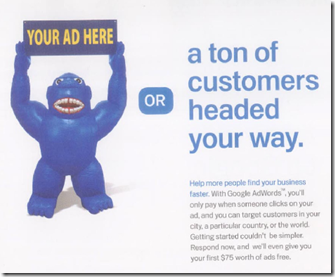There’s been a lot of talk about TrueCar lately in automotive industry forums blasting them for their business practices and how “evil” they are. There’s a thread on DealerElite with over 33 PAGES of comments [edit: 50+ pages] in response to Jim Ziegler’s question:
“TRUE CAR and ZAG Cyber Bandits: Parasites or Good for the Car Business?”
..and even a video from Jerry Thibeau of Phone Ninjas who has a very strong opinion:
(Edit: I guess TrueCar didn’t like the video. It appears that they had it removed.)
My experience with HomeNet Automotive (the leading automotive data distribution company now owned by AutoTrader) gave me unique insight from all perspectives: vendors, 3rd party inventory sites and dealers.
Whether you think TrueCar is good or bad for the automotive industry, you have to step back and consider a few things:
(In regards to TrueCar having, and using, a dealer’s sales data) In the early days of inventory marketing, it was the general thought that having your inventory on every 3rd party site possible was a great idea. Most dealers signed up for every 3rd party site they could, especially if it was free. When I was an Internet Director, I signed up for them all also. When I was with HomeNet, I talked to many Dealer Principals that wanted their inventory everywhere. Most never read any “terms and conditions”, they just signed up. Any of these third party sites could have been polling their DMS for not only inventory but sales data and they never would have known. Nothing’s free. It wasn’t until recently that people started questioning the wisdom of shotgunning their data and, even then, it had nothing to do with whether the sites should have it but how it was effecting their SEO efforts and how the sites were using their data to collect leads then selling those leads to the dealer. It had nothing to do with the fact that they HAD the data in the first place.
When HomeNet Automotive integrated TrueCar into their inventory management tool, (IOL Pro), as a rep, I visited many dealers who loved the TrueCar feature and ability to use reports to close deals and research competitor pricing. Only a few even questioned where the data was coming from and in only one case was a dealer actually upset that we (ie. HomeNet) had the sales data at all. The fact remains that this data was given voluntarily by the dealer to hundreds of 3rd party sites, each with their own terms and conditions, and any of which could have been polling their DMS for sales data and, in turn, providing it to TrueCar, Edmonds, AutoTrader, etc. or any of the hundreds of other sites.
(In a now amusing tangent, industry people demonize Reynolds and Reynolds all the time for protecting their data (ie. not allowing unauthorized 3rd party access) and throttling their control over distributing it to just anybody and now these same people are complaining about 3rd parties having the data.)
Now, onto the lead program.. People are complaining that TrueCar leverages the dealer’s data (which the dealers are giving to countless websites already) to provide consumers information on the lowest prices for vehicles, converting the lead and offering it to the dealers on a per sale cost of $300 versus a per lead basis. Why is this so evil?
There are plenty of 3rd party sites that do the same thing with the only difference being that they charge per lead. Hell, even MANUFACTURERS do it. When I was in retail, I used a company with a similar pricing strategy named Autotropolis (since bought by Autobytel for $15 million). I LOVED those leads. I could easily identify a lead from them and factor in the $250 per sale fee into any deal structured or quote given to a consumer. I only paid when I sold a car. It was great. At least on a per sale basis, my cost per sale was fixed. With 3rd party leads, it wasn’t. I hear dealers complain about $900+ costs per sale with their AutoTrader programs yet they still participate. The point is that I was always in control of the sale. If I didn’t want to sell the vehicle at the pricing given to them, I didn’t. It was my choice. The fact is that I would rather have the opportunity to earn the sale than not have it. Why wouldn’t you want a fixed cost per sale on internet leads?
Dealers have been sending their transactional and inventory data to 3rd parties for YEARS. This isn’t some new phenomenon that’s all of a sudden appearing. Everyone wants to single out TrueCar when, in fact, TrueCar is only ONE OF MANY companies that have their data. Dealers have willingly and happily provided this data to 3rd party sites for YEARS (at least as far back as 2003 to some sites that I personally know of).
To top it all off, dealers and industry professionals have been evangelizing transparency in their sales processes, pricing and interactions with consumers yet it appears that dealers don’t really want transparency, what is wanted is the illusion of transparency.
Bottom line: If you don’t want your data used by a 3rd party, stop giving it to them. I’m not just talking about TrueCar, I’m talking about EVERY 3rd party.
TrueCar is a business that pays for information received from the dealers themselves. Rather than demonizing TrueCar for monetizing the data by providing a service to both consumers (via transparency) and dealers (via sales), don’t participate.
As the saying goes: Don’t hate the player, hate the game.
(Edit: TrueCar is just a scapegoat and convenient target. I don’t necessarily disagree with all of the arguments, just the placing of the blame on TrueCar. Dealers created this, not TrueCar.)
UPDATE 12/1/11: Seems as if my friend Jerry created a new video.



